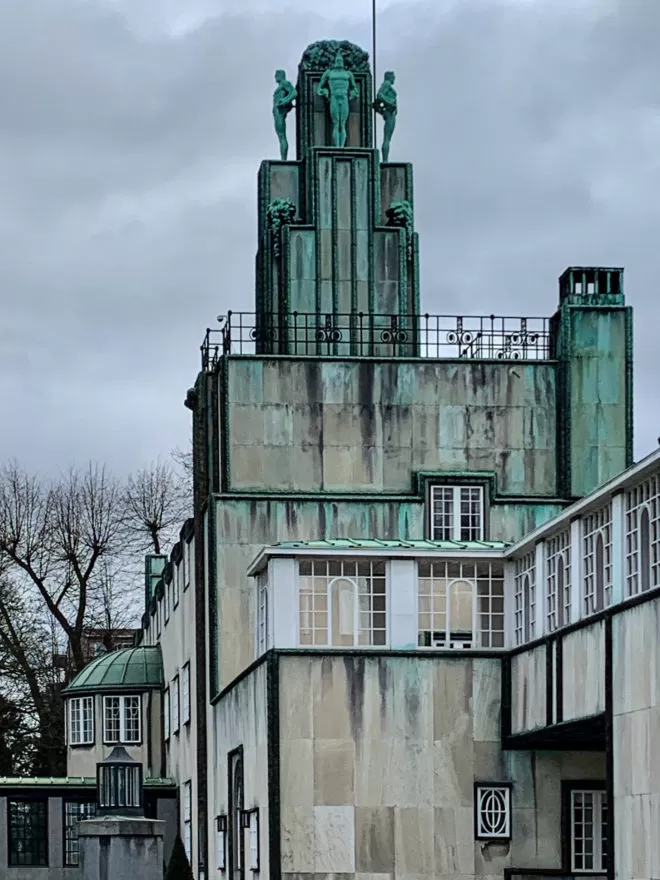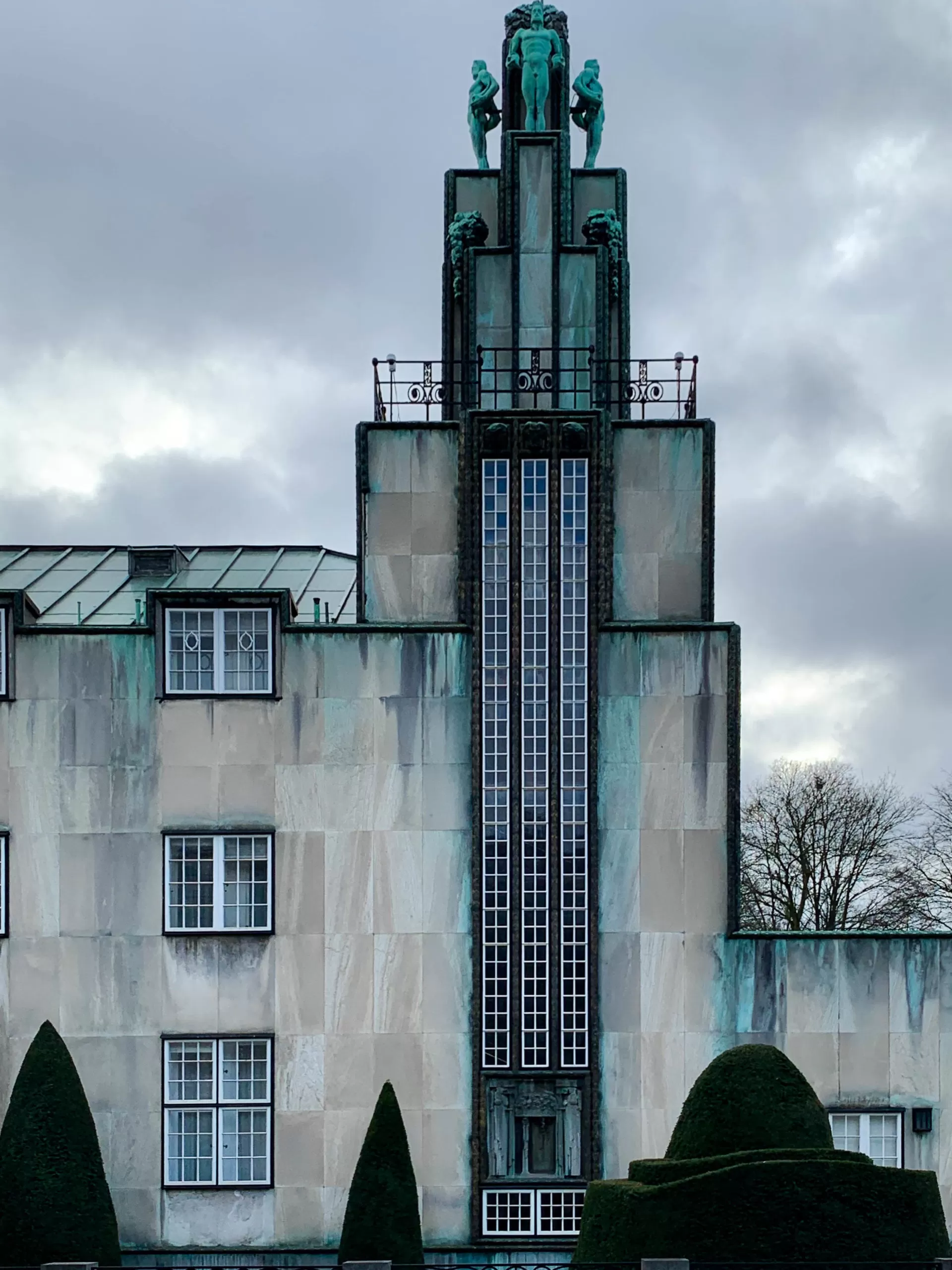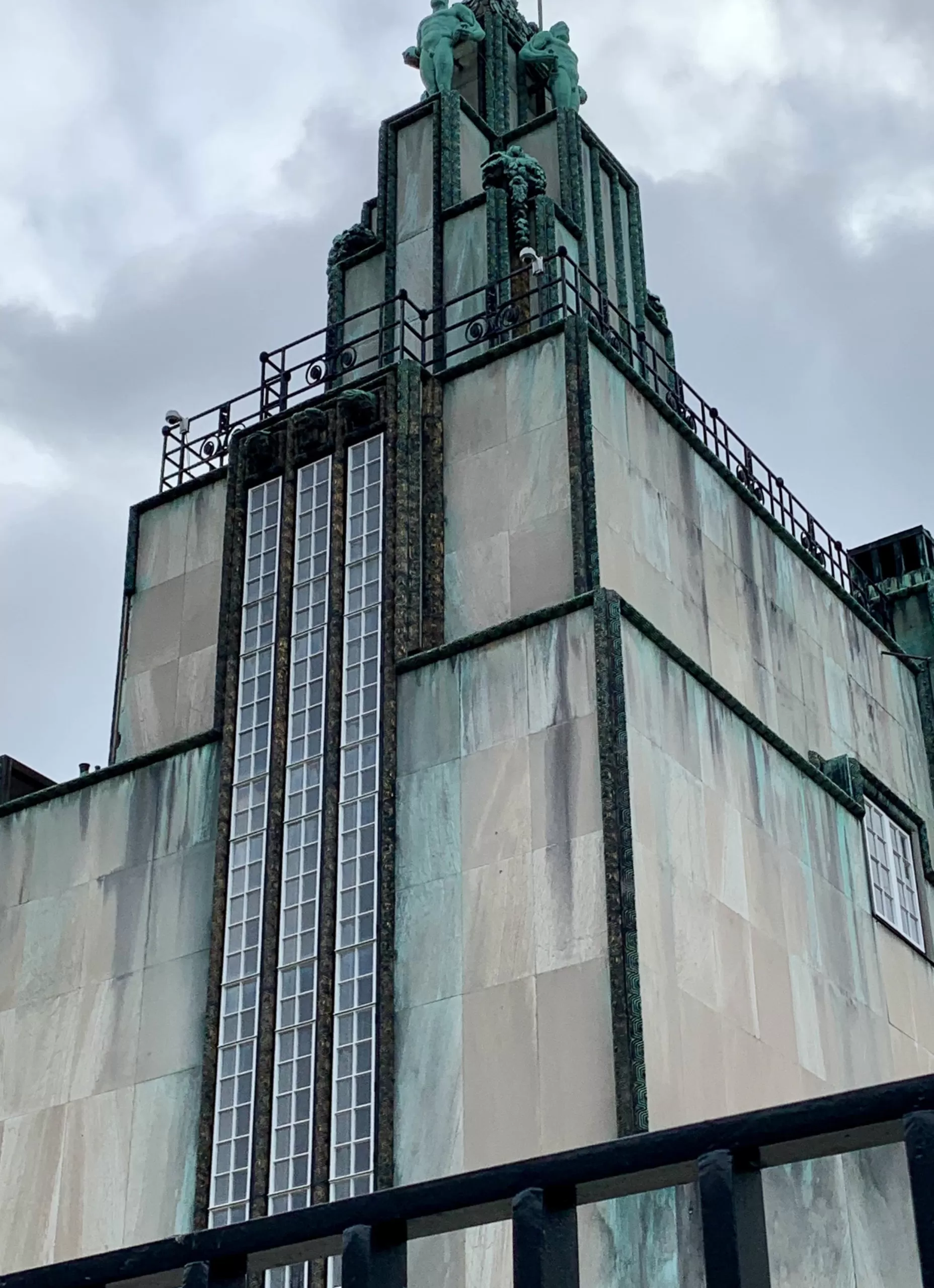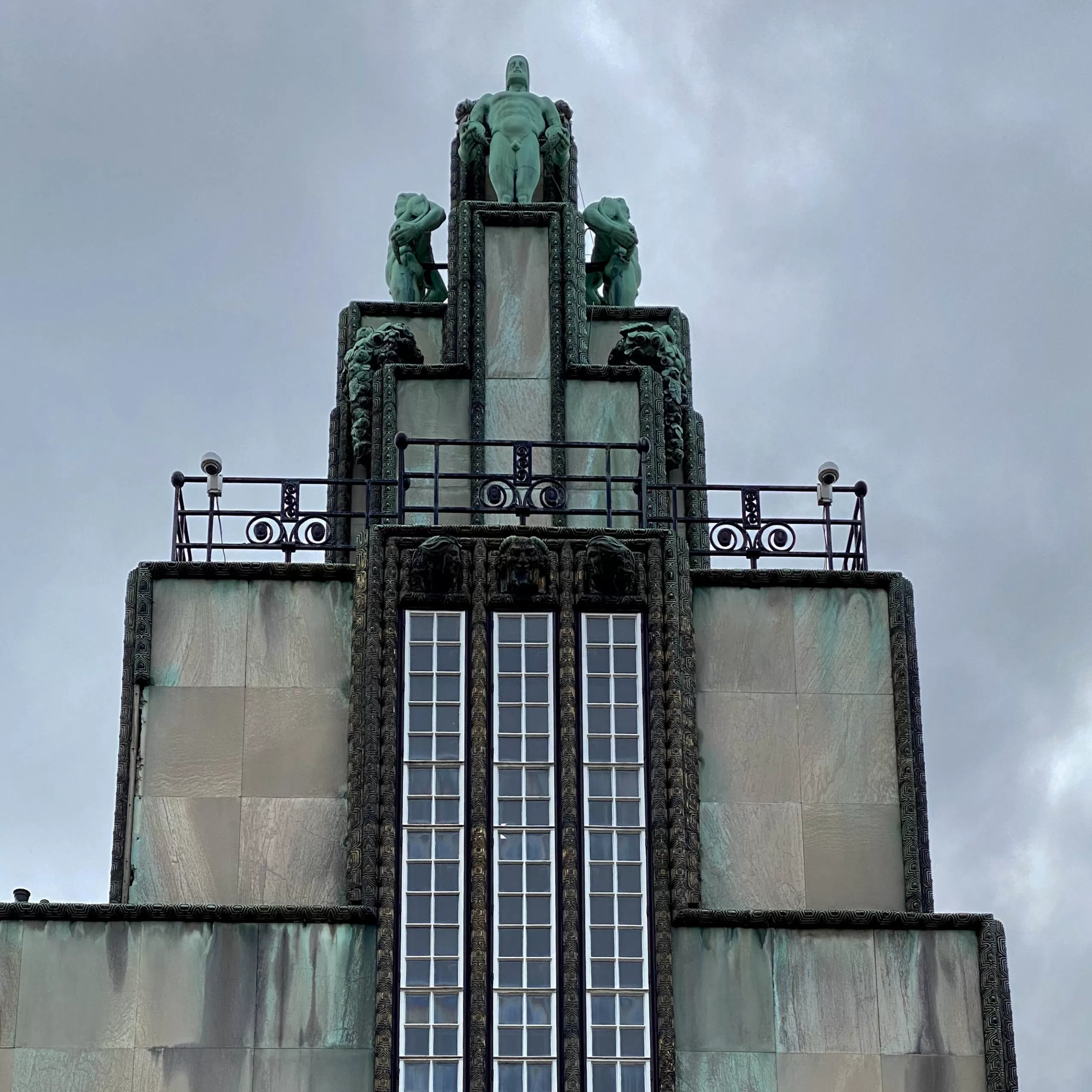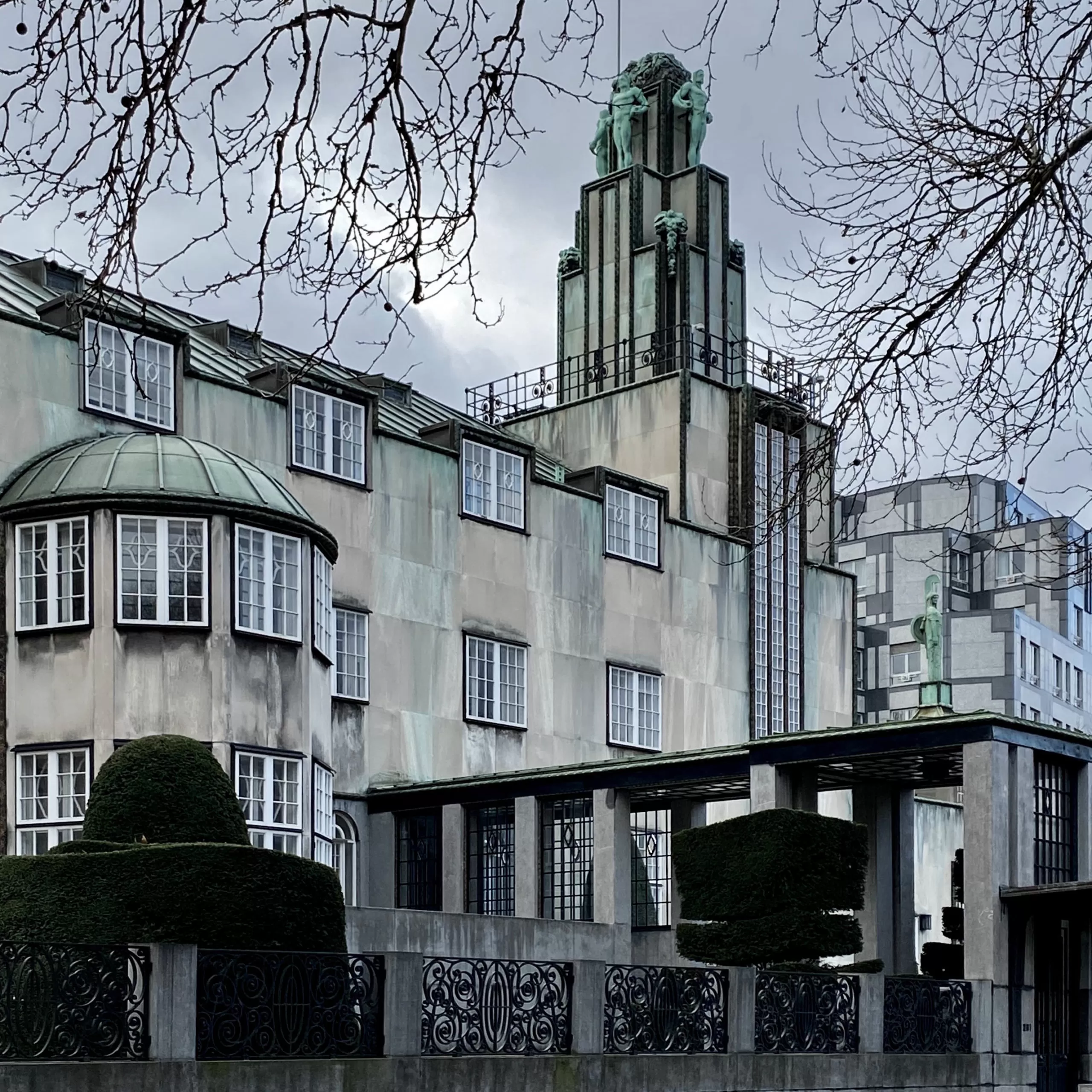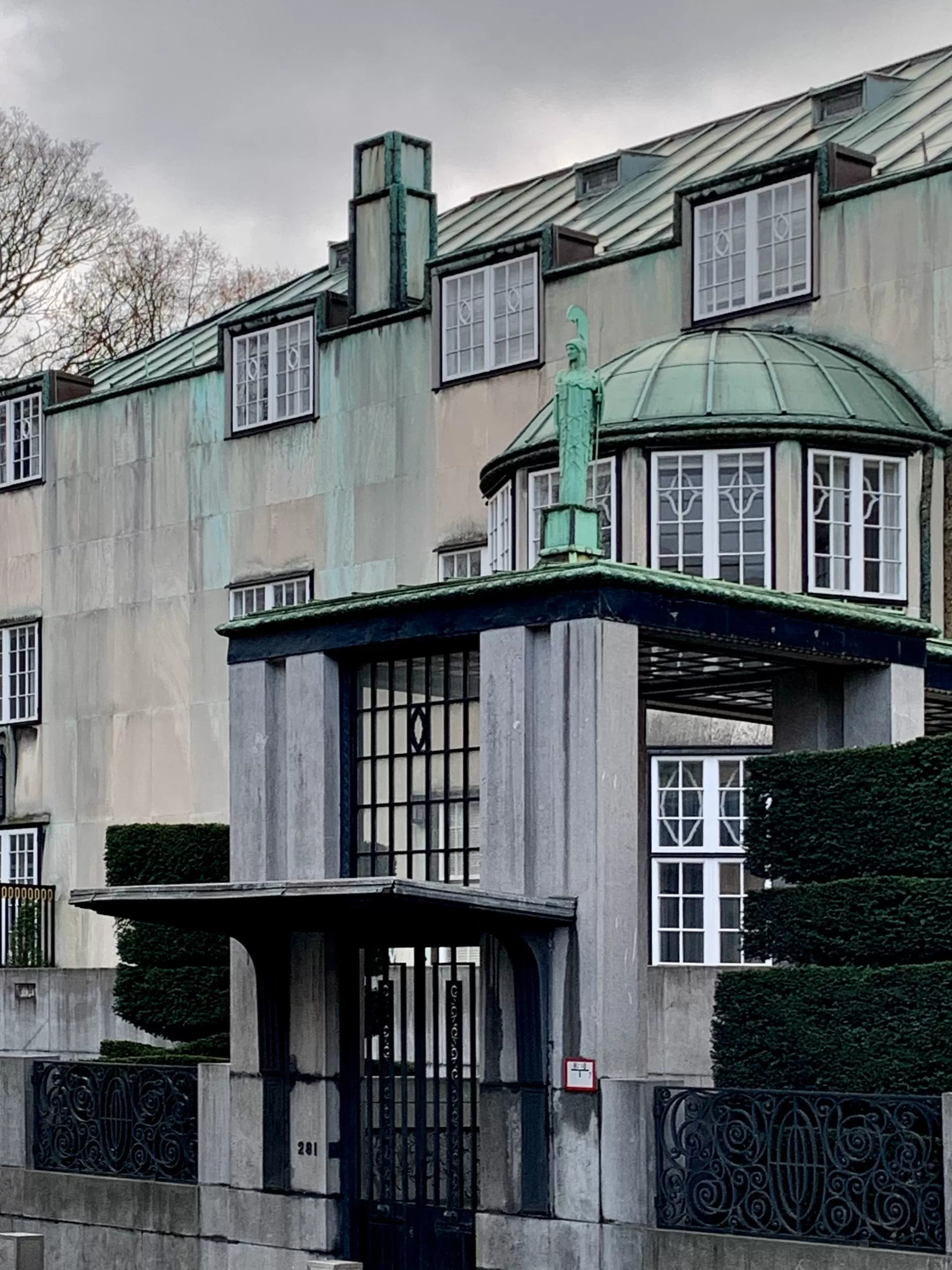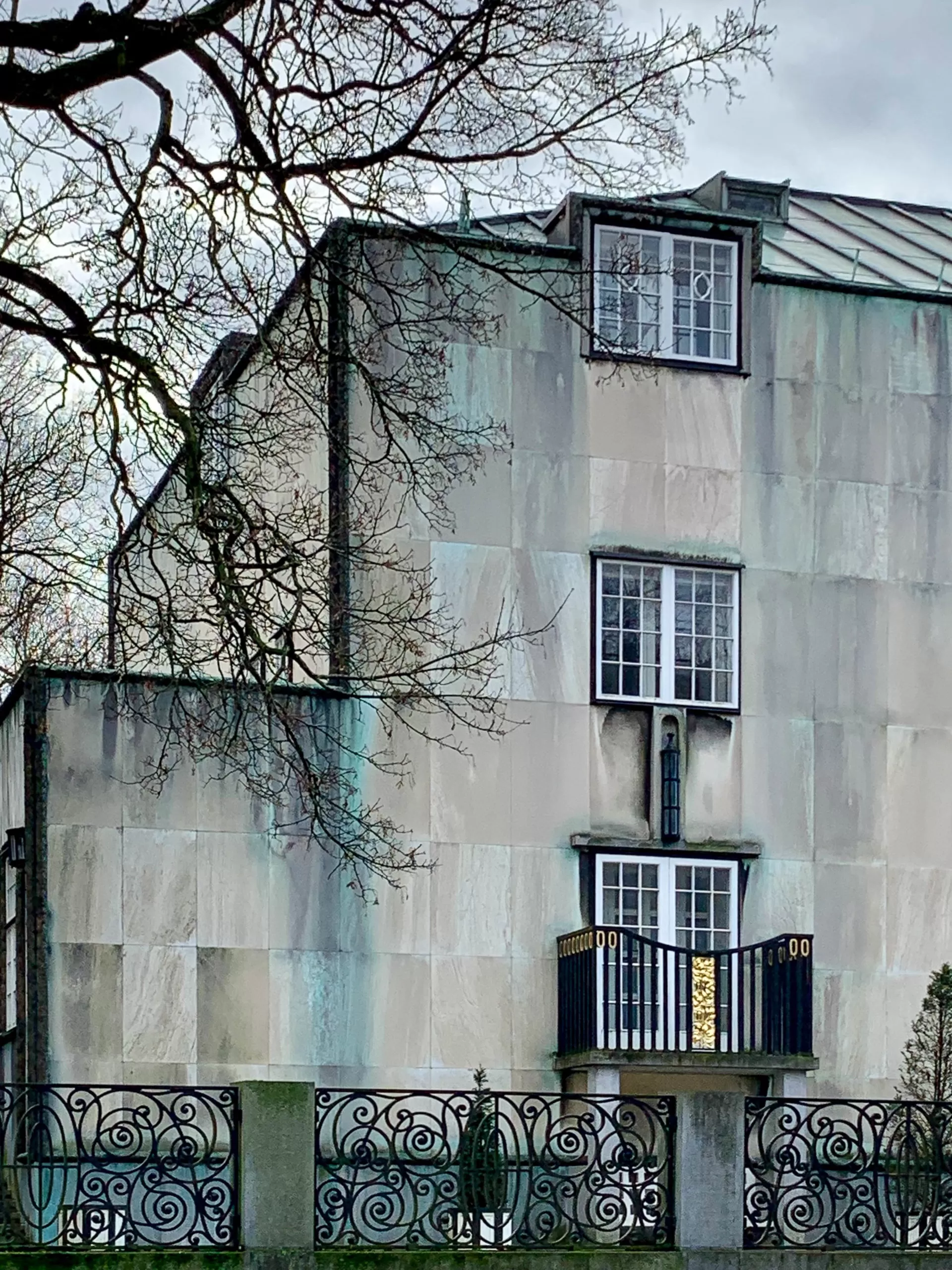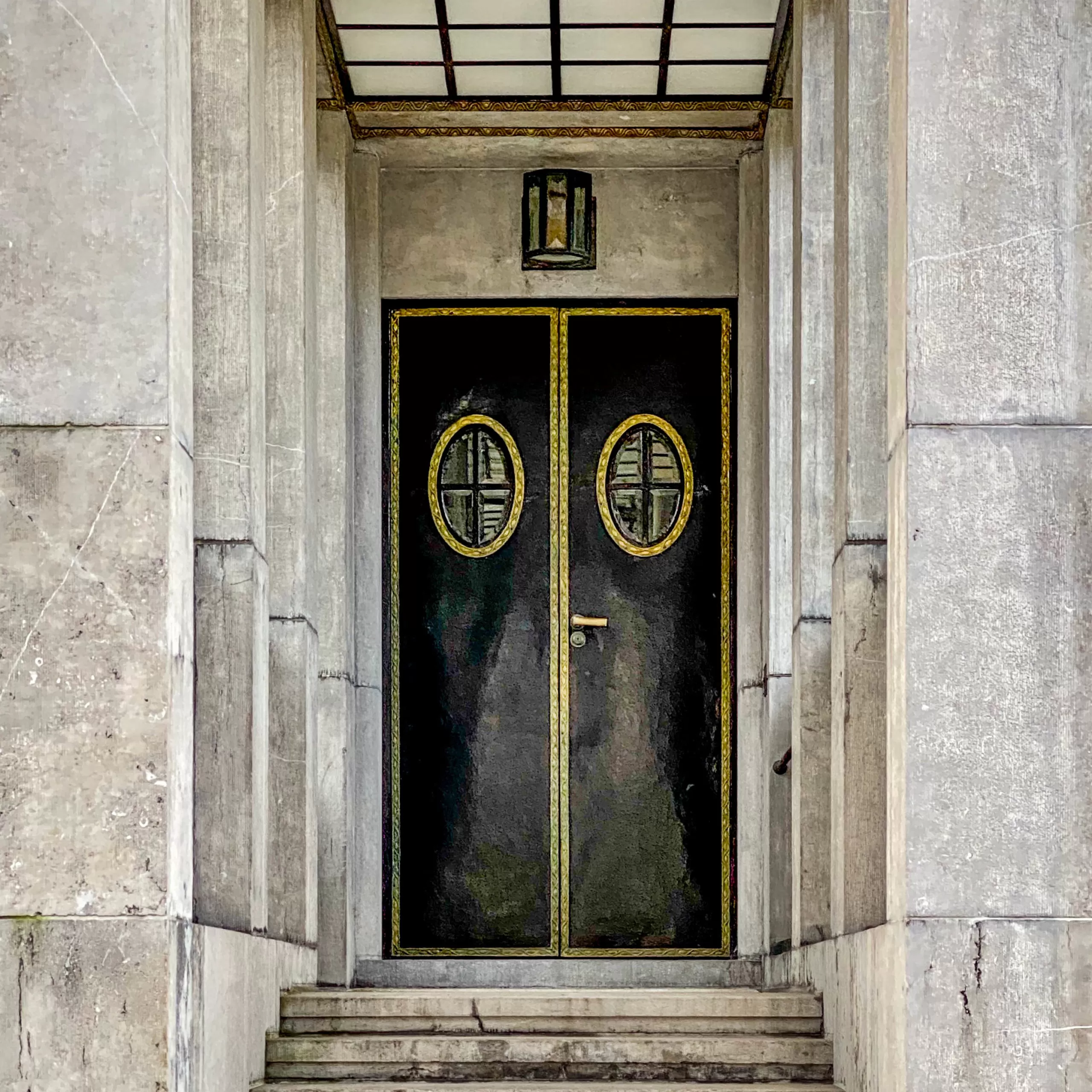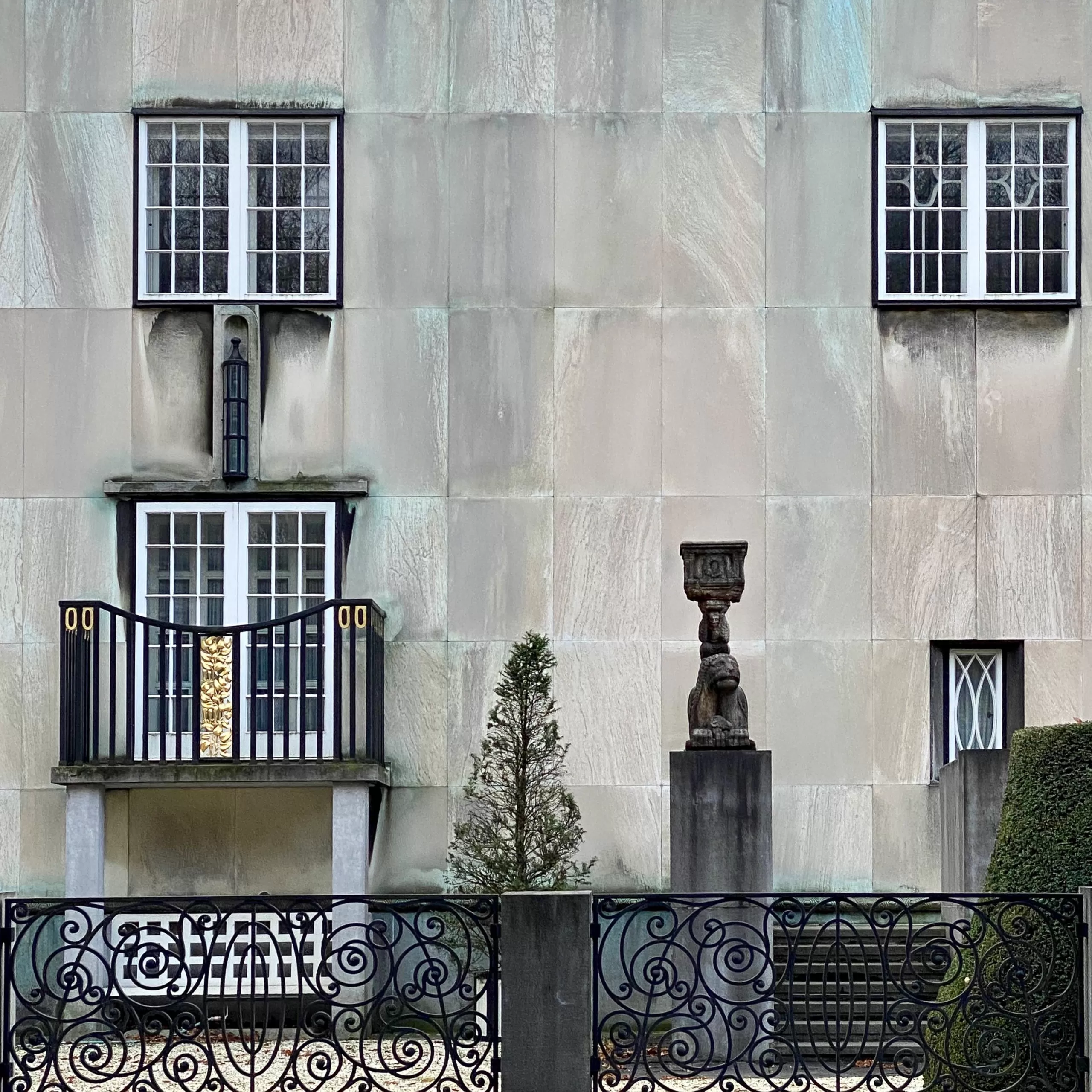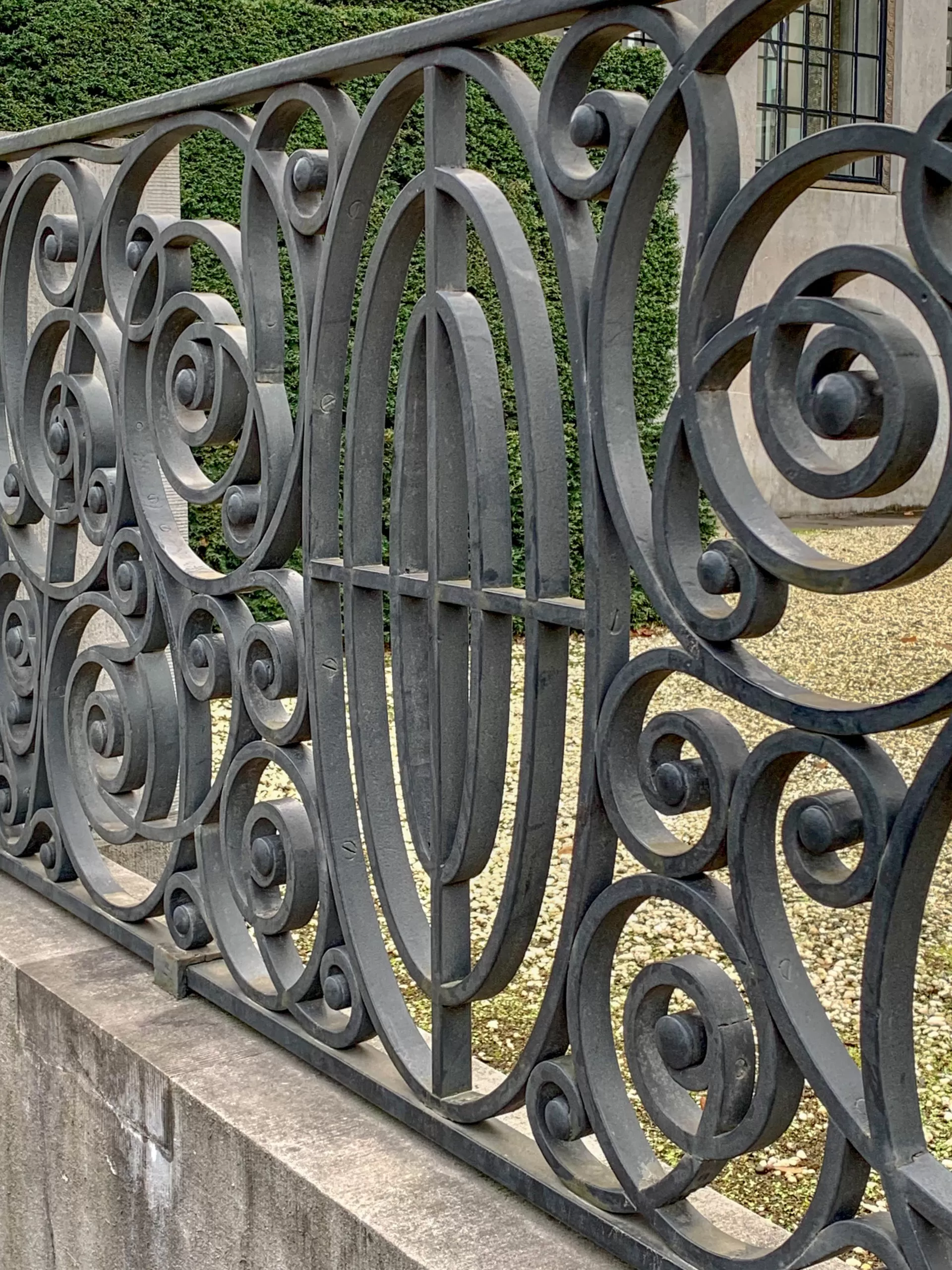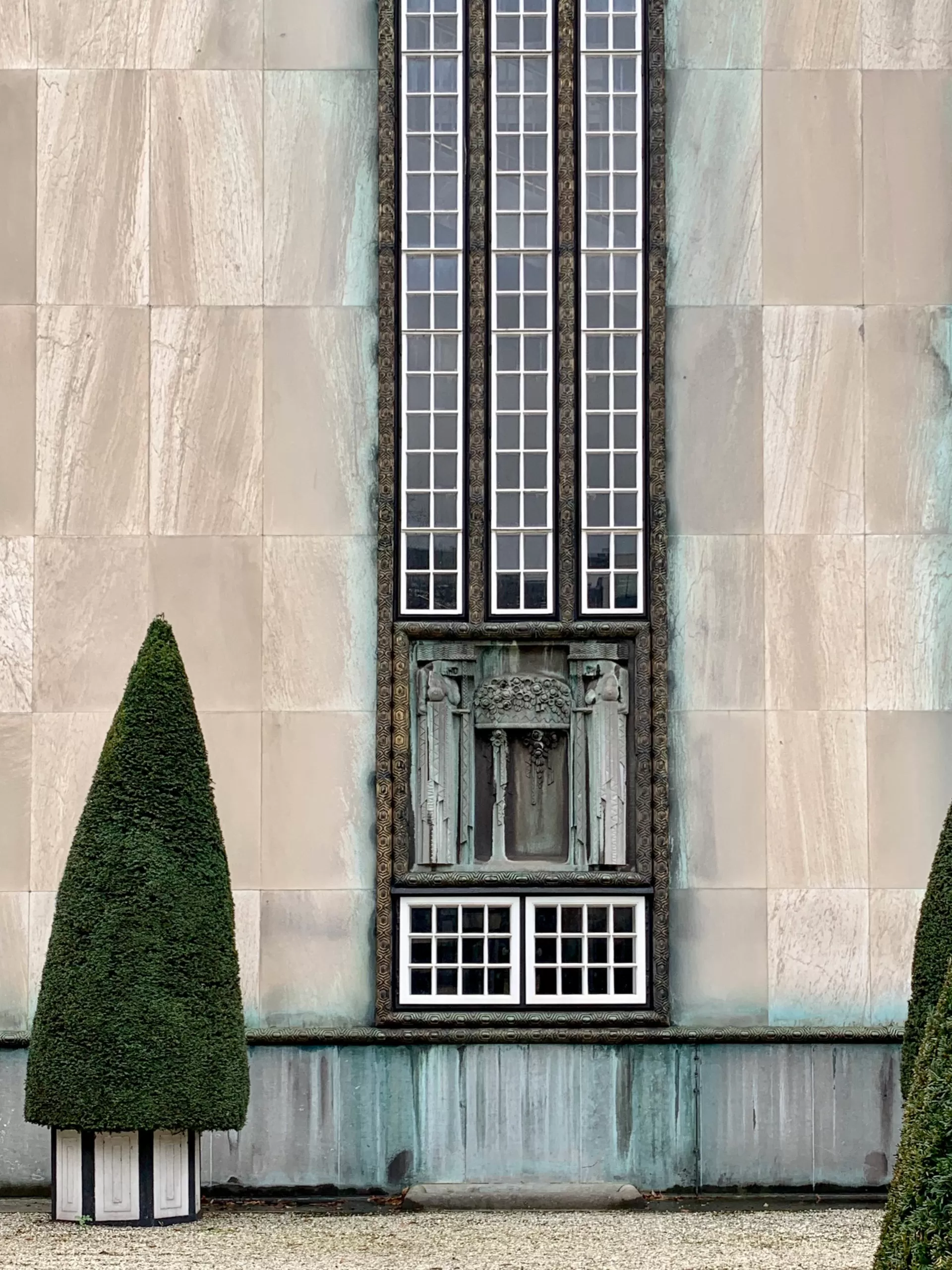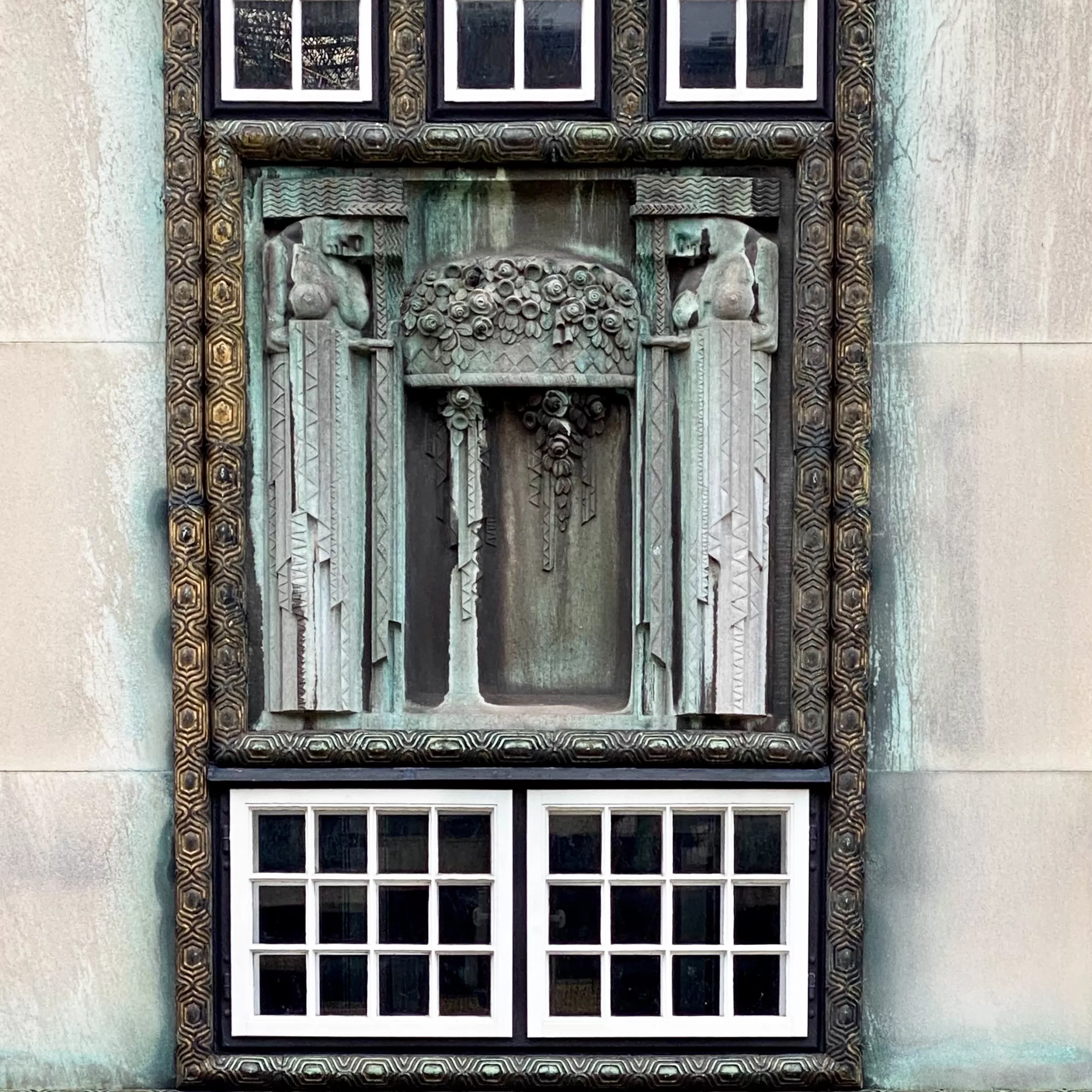
Floor plan ground floor. Palais Stoclet, 1905-1911. Architect: Josef Hoffmann
1905 – 1911
Architect: Josef Hoffmann
Avenue de Tervueren 275-282, Brussels, Belgium
Palais Stoclet is a villa built from 1905 to 1911 in the style of the Viennese Secession in Woluwe-Saint-Pierre in the Brussels-Capital Region.
The architect was Josef Hoffmann. The artist Gustav Klimt created the famous Stoclet frieze in the dining room of the villa.
The house and its accompanying garden were completed in 1911.
The strict geometry of the architecture marked a turning point in Art Nouveau, anticipating the Art Deco style.
Background
When banker and art collector Adolphe Stoclet commissioned this house from one of the leading architects of the Vienna Secession, Josef Hoffmann, in 1905, he made no design or financial restrictions.
The client was the wealthy entrepreneur Adolphe Stoclet, son of Victor Stoclet and his wife Anne Kitty.
Adolphe Stoclet was born in Brussels in 1871 to a wealthy family of bankers and civil engineers.
Against his family’s wishes, he married the daughter of a Parisian art dealer, Suzanne Stevens, and had three children with her.
As an engineer, Stoclet devoted himself to railroad construction, which brought him to Vienna, where he participated in the construction of the Aspang Railway.
Soon the Stoclets were socializing in the artistic circles of Vienna, first of all the Secessionists.
Josef Hoffmann
Adolphe Stoclet commissioned Josef Hoffmann, who was initially still busy with the construction of the Purkersdorf sanatorium near Vienna, together with the Wiener Werkstätte, which was responsible for the artistic design, to create a total work of art.
In addition to Klimt, numerous other artists (including Carl Otto Czeschka, Ludwig Heinrich Jungnickel, Emilie Schleiss-Simandl, Richard Luksch, Elena Luksch-Makowsky and Franz Metzner) were involved in the extensive overall concept.
For the execution of the Palais Stoclet, extremely precious materials were used, such as Norwegian Turilim marble for the exterior walls and yellow-brown Italian Paonazzo marble for the interior walls.
Total Work of Art
The Belgian artist George Minne designed sculptures and sculptures for the interiors, Fernand Khnopff created colorful drawings for the music room.
Gustav Klimt was commissioned to work with the mosaic workshop of Leopold Forstner to create what was later known as the Stoclet Frieze for the dining room of the palace.
Klimt had already created the first sketches for it in 1905, but later changed his concept and drew the final transfer drawings in original size in the summer of 1908 at his summer residence on Lake Attersee (today in the Museum of Applied Arts in Vienna).
In 1909, Leopold Forstner’s mosaic workshop began testing samples of materials for the transfer.
In 1911 Klimt was present when his design was transferred to the walls of the dining room at Palais Stoclet.
UNESCO World Heritage Site
Since the end of June 2009, Palais Stoclet has been part of the UNESCO World Heritage. It is still privately owned and not open to the public.

